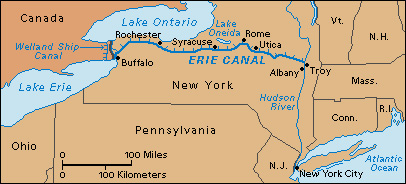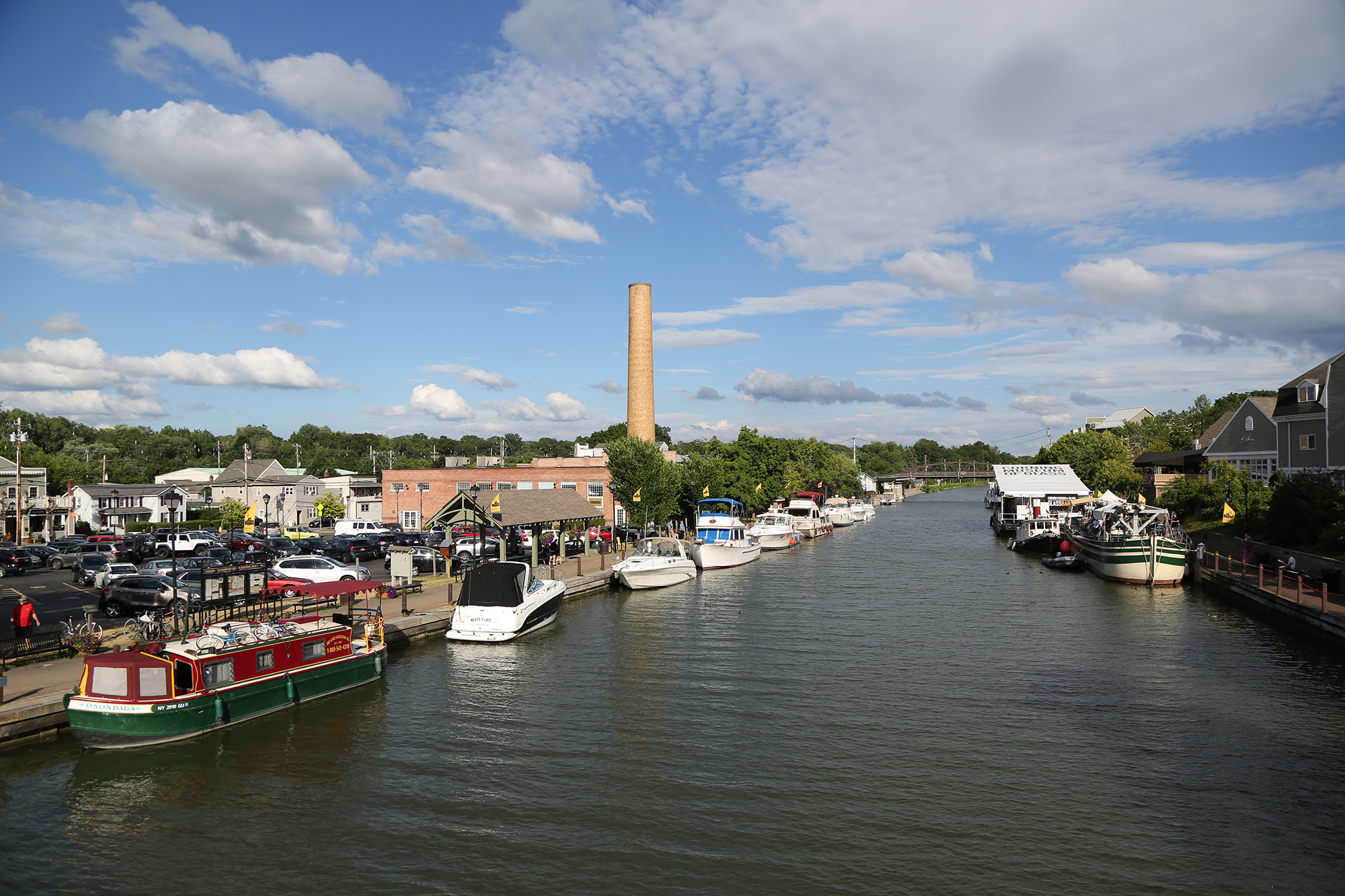Erie << EER ee >> Canal was the first important national waterway built in the United States. It crossed upstate New York from Buffalo on Lake Erie to Albany to Troy on the Hudson River. Completed in 1825, the canal joined the Atlantic Ocean with the Great Lakes system. It provided a route over which manufactured goods and settlers could flow into the Midwest without passing through Canada, and over which timber and agricultural products could be transported to the East.

For a hundred years before the Erie Canal was built, people had been talking about a canal that would join the Great Lakes and the Atlantic Ocean. The man who planned the Erie Canal and carried the plans through was De Witt Clinton. Clinton was mayor of New York City for most of the period between 1803 and 1815. He was governor of the state from 1817 to 1822 and again from 1825 until his death in 1828. Those who opposed the canal laughingly called it “Clinton’s Ditch.”
Clinton and Gouverneur Morris went to Washington in 1812 to ask for federal help for the project, but they were unsuccessful. In 1816, Clinton petitioned the New York State Legislature to build the canal. His petition won so much support that the governor appointed a canal commission and made Clinton its head. Clinton became governor in 1817, and shortly afterward, on July 4, 1817, broke ground for the canal in Rome, New York, then a village on the Mohawk River. Construction took eight years. The canal formally opened on Oct. 26, 1825. The first barge to travel its entire length, the Seneca Chief, left Buffalo with Clinton on board on Oct. 26, 1825. It arrived in New York City on November 4 and was greeted all along the way by enthusiastic crowds.
The building of the canal was paid for by the state of New York. It cost $7,143,789, but it soon earned its price many times over. The canal cut freight rates between Buffalo and New York City by more than 90 percent and strengthened New York City’s position as the nation’s largest city and principal port. As the canal traffic grew, towns along its course prospered. Albany, Utica, Syracuse, Rochester, and Buffalo became major cities.

The original canal was 363 miles (584 kilometers) long. It was 28 feet (8.5 meters) wide at the bottom, 40 feet (12 meters) wide at the top, and 4 feet (1.2 meters) deep. It could carry barges that were 80 feet (24 meters) long and 15 feet (4.6 meters) wide, with a draft of 31/2 feet (1.1 meters). The canal had 83 locks, which raised vessels on the canal about 565 feet (172 meters) from the Hudson River to Lake Erie. Barges were towed along the canal by horses and mules on shore. At first, travel on the canal was slow. The famous editor Horace Greeley wrote that passengers traveled a mile and a half an hour on the Erie Canal for a cent and a half a mile. But fast passenger boats could travel 100 miles (160 kilometers) a day.
The canal was enlarged several times between 1835 and 1862. But business began to fall off in the 1870’s as railroads became the main long-distance carriers of freight and passengers. In 1903, the people of New York voted to build a great modern waterway, linking the Erie Canal with three shorter canals in the state to form what now is called the New York State Canal System. This system, which is 524 miles (843 kilometers) long, opened in 1918. See New York State Canal System.
See also Clinton, De Witt.
